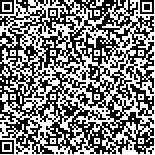下载中心
优秀审稿专家
优秀论文
相关链接
首页 > , Vol. , Issue () : -
摘要

浮游植物是海洋生态环境中不可或缺的一部分,其粒径等级(PSC)是描述浮游植物在不同地球生物化学循环过程中重要作用的关键参量。黄海、渤海和东海整体位于中国东部,呈现半封闭特征,PSC现场测量数据集主要来自于近几年开展的航次观测实验,采样点在空间和时间上分布稀疏不均,因此需要结合高频次、覆盖范围广的遥感反演技术来填补现场实测数据的不足。本文基于MODIS/Aqua传感器在2002.08—2021.07期间的海表遥感反射率产品,应用Sun等(2019)构建的PSC遥感反演模型,生产PSC长时序数据集。数据集以Matlab标准格式存储,共包含228个文件,便于各软件读取(下载方式:DOI: 10.17632/mjg5s9p4wp.3)。产品精度验证结果显示:卫星反演与现场测量结果较为一致(小型、微型和微微型浮游植物的平均绝对百分比误差分别为22.9%、11.4%和35.0%)。同时不同海域的空间分布对比验证发现,经叶绿素a重构之后的PSC反演模型效果更贴近于现场测量值。基于本数据集的PSC长时序分布统计结果显示:近岸海域主要以小型浮游植物富集,离岸水域主要以微型浮游植物为主。从典型区域的多年月平均曲线来看,以小型浮游植物为例,渤海中心和长江口区域都存在春(5月)、夏季(7月)“双峰”特征,而北黄海区域则呈现春(4月)、秋季(10月)“双峰”特征。同时南黄海和东海离岸海域的春季峰值更显著,分别位于4月和3月。本数据集有助于精细化分析理解黄海、渤海和东海浮游植物各项生理、生态功能的时空变化规律,同时又可以作为水体环境监测常规项目,值得推广使用。
Phytoplankton are indispensable part of the marine ecological environment, and their size class (PSC) is a key parameter to describe the vital role of phytoplankton in different geobiochemical cycles. The Yellow Sea, the Bohai Sea and the East China Sea are located in the eastern part of China as a whole, shown as semi-closed characteristics. The PSC field measurement is mainly dependent on the in situ cruise observation experiments carried out in recent years. The sampling points are sparse and uneven in space and time. Therefore, it is necessary to use high Remote sensing inversion technology with a wide range of frequency and coverage to fill the insufficiency of field measured data. Based on the sea surface remote sensing reflectance products of MODIS/Aqua sensors from 2002-08 to 2021-07, this paper applies the PSC remote sensing inversion model constructed by Sun et al. (2019) to produce PSC long-term data set. The data set is stored in the standard format of Matlab and contains 228 files in total, which are easy to read by each software (DOI: 10.17632/mjg5s9p4wp.3). The product accuracy verification results show that the satellite inversion and the field measurement results are relatively consistent (the average absolute percentage error is 22.9%, 11.4%, and 35.0% for micro, nano, and picophytoplankton, respectively). At the same time, the comparison of spatial distribution in different sea areas shows that the PSC inversion after reconstructing the chlorophyll a concentration is closer to the field measured value. The statistical results of the long-term distribution of PSCs based on this dataset show that the coastal waters are mainly enriched by microphytoplankton, while the offshore waters are primarily dominated by nanophytoplankton. Judging from the multi-year monthly averaged PSCs in five specific areas, taking microphytoplankton as an example, there are "double peaks" in spring (May) and summer (July) in the center of the Bohai Sea and the mouth of the Yangtze River, while the North Yellow Sea area presents a spring (April), autumn (October) peak feature. Meanwhile, the spring peaks in the offshore waters of the South Yellow Sea and the East China Sea are more significant in April and March, respectively. This dataset is helpful for fine-grained analysis and understanding of the temporal and spatial variation of phytoplankton in the Yellow Sea, the Bohai Sea, and the East China Sea. It can also be used as a routine project for water environment monitoring and is worthy of popularization.

